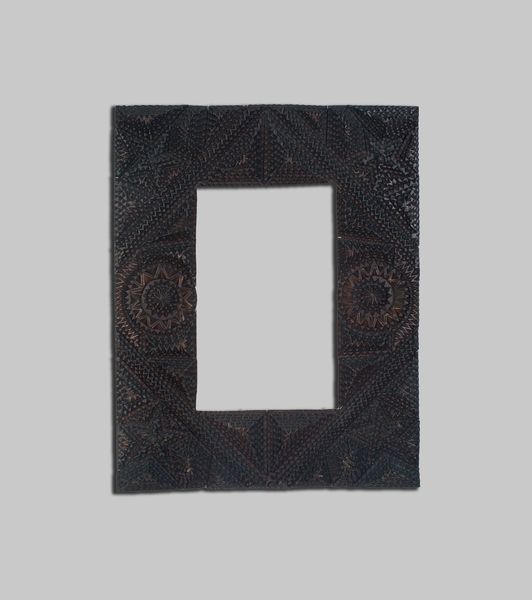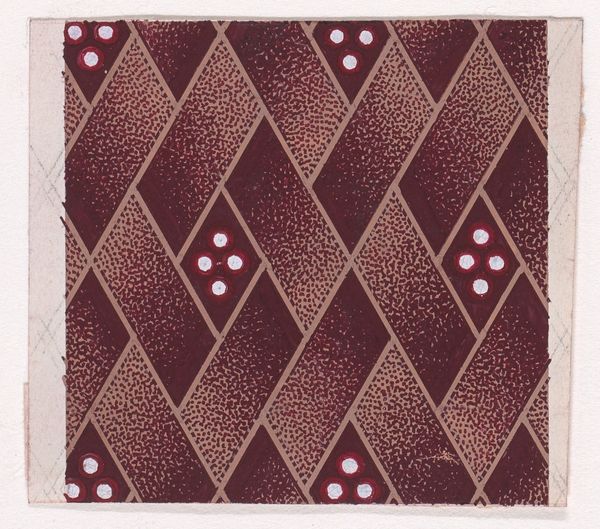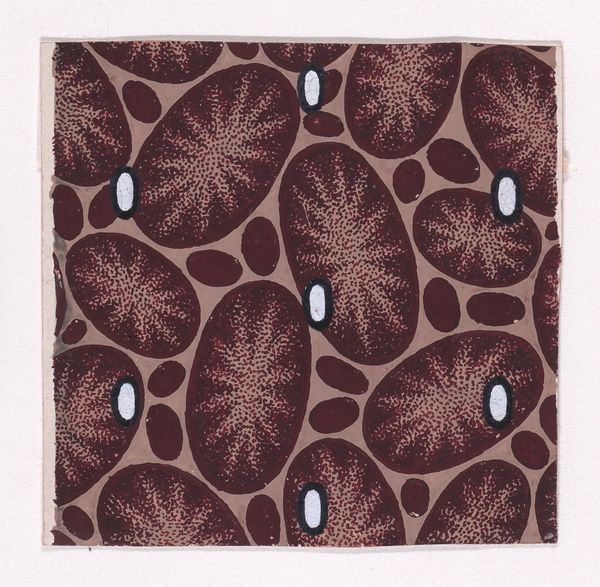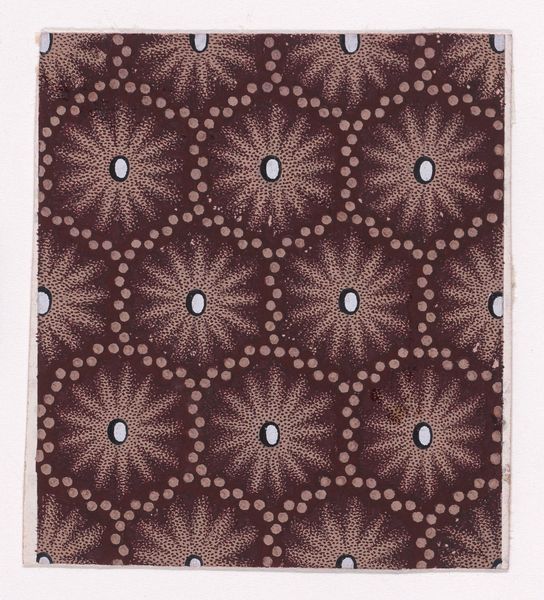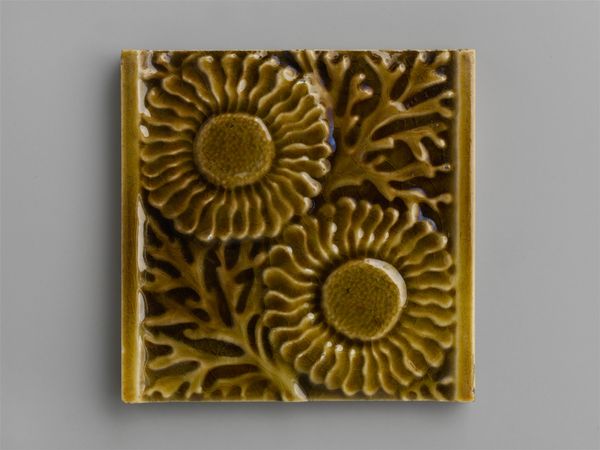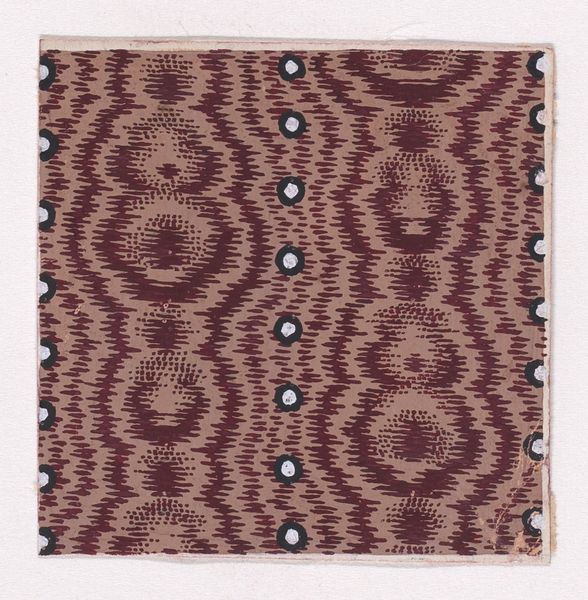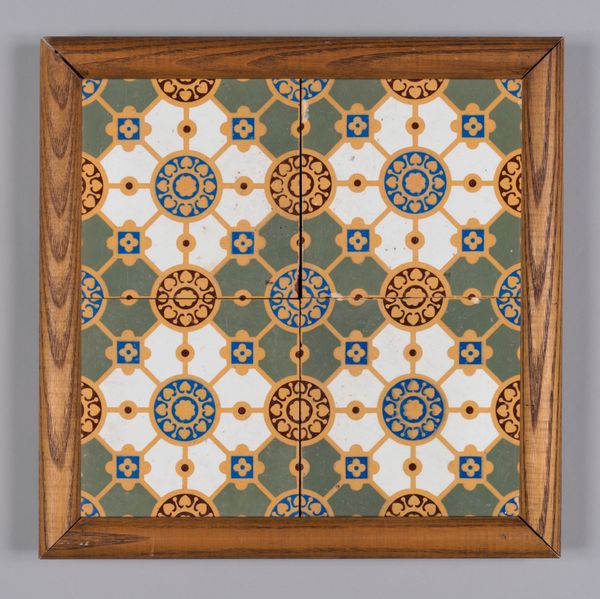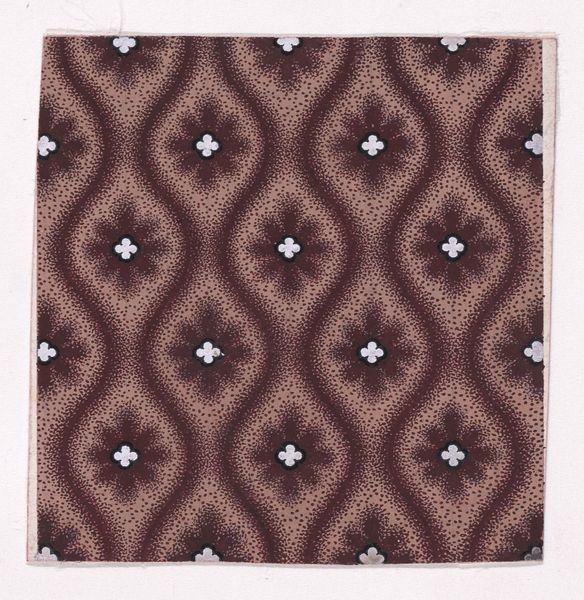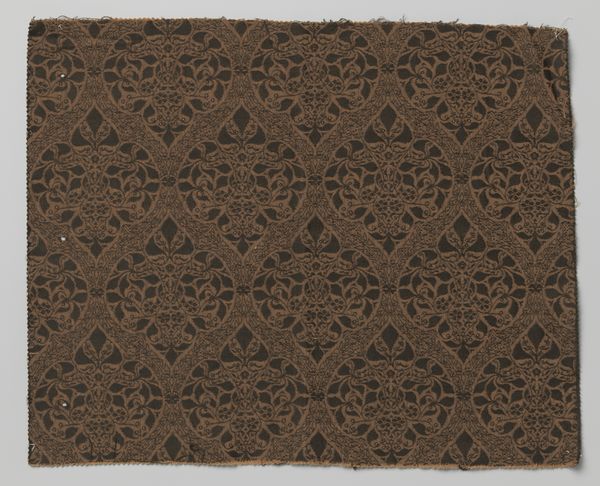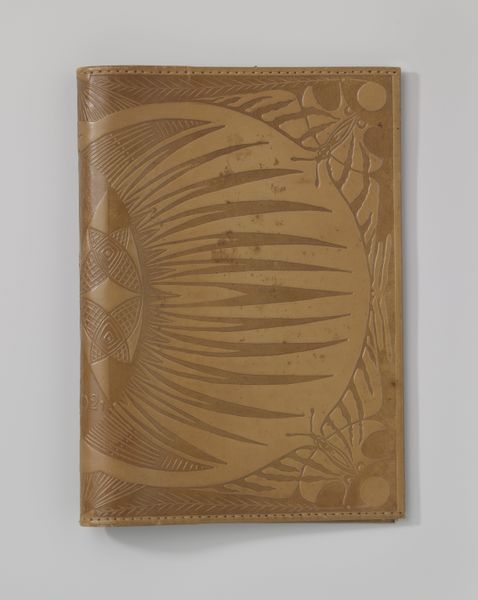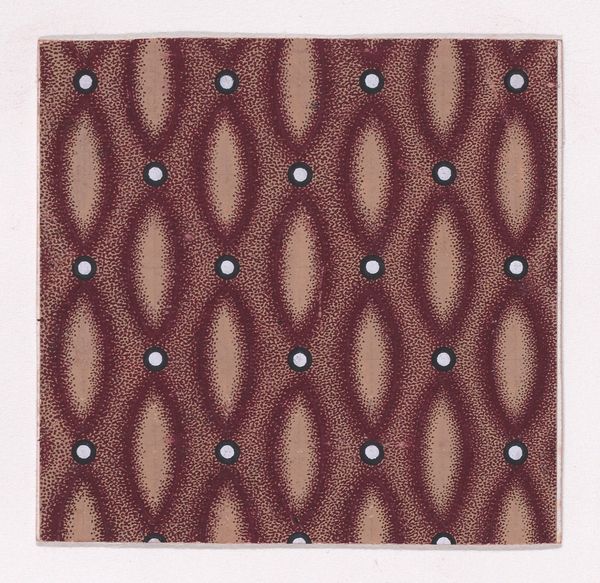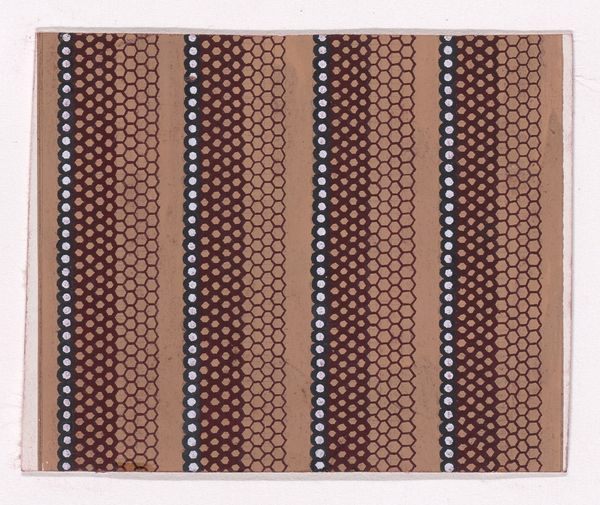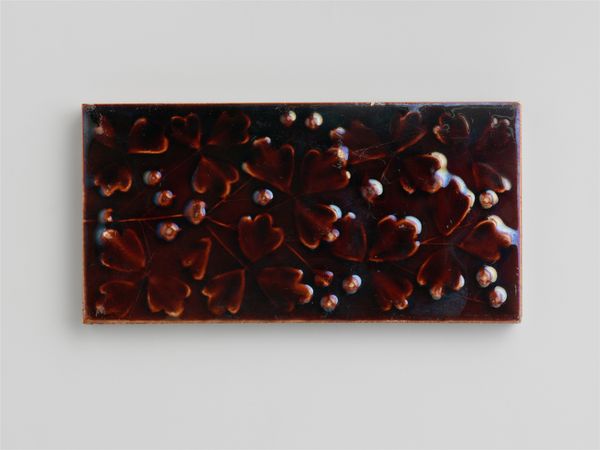
ceramic
#
arts-&-crafts-movement
#
pattern
#
ceramic
#
geometric
#
united-states
#
decorative-art
Dimensions: 6 1/8 x 3 1/8 in. (15.6 x 7.9 cm)
Copyright: Public Domain
Curator: I am immediately struck by how grounded and earthy this tile appears, almost ancient in its visual vocabulary. Editor: That’s a fitting description. We're looking at a ceramic "Tile" crafted sometime between 1879 and 1884 by J. and J. G. Low Art Tile Works, now residing at the Metropolitan Museum of Art. Curator: The geometric network enclosing the floral emblems, and the depth of the glaze, create such a powerful, yet intimate symbolic world. What do you notice? Editor: Well, first off, the interplay between craft and industrial production is very apparent here. J. and J. G. Low leveraged technological advancements in ceramic manufacturing to produce tiles like these at scale. Though each tile bears a unique artisan touch, their business model depended on factory output and widespread distribution. Curator: Precisely. It speaks to a fascinating tension within the Arts and Crafts movement—embracing the handmade while also navigating industrial realities. The tile almost serves as a micro-cosmos of that period's ambition to reconcile beauty and mass production. Editor: Absolutely, and thinking materially, these tiles offered a practical yet aesthetically rich option for interior design, a direct challenge to older forms of ornamentation accessible only to the upper classes. Curator: Right. The tile format invites modularity and infinite extension. There's a democratizing impulse in making art, and beauty, literally foundational to everyday life. But there’s a feeling I get from the repeating pattern...is that simply ornamental, or is there a subtle, even subversive repetition? Editor: Perhaps the labor and design of such geometric design is less about 'subversion' and more about value of material, skill and beauty for the working classes, challenging pre-conceptions of taste through access and affordability. Curator: That's a valid counterpoint; the availability shifts the paradigm. But for me, I can't help but think about how the tile encapsulates a wider movement, in both design and culture, by taking on so much representational and aspirational symbolism. Editor: It really shows how an apparently straightforward piece embodies complex arguments about art, industry, labor, and accessibility. Curator: Yes, a fascinating window into the shifting aesthetic and societal landscape. Editor: It reminds us that 'art' can live on such planes, far from traditional 'masterpieces' exhibited by museums, blurring such traditional art categories.
Comments
No comments
Be the first to comment and join the conversation on the ultimate creative platform.
